Naval Aviation and Northrop Grumman
A Legacy of Unmatched Partnership and Innovation
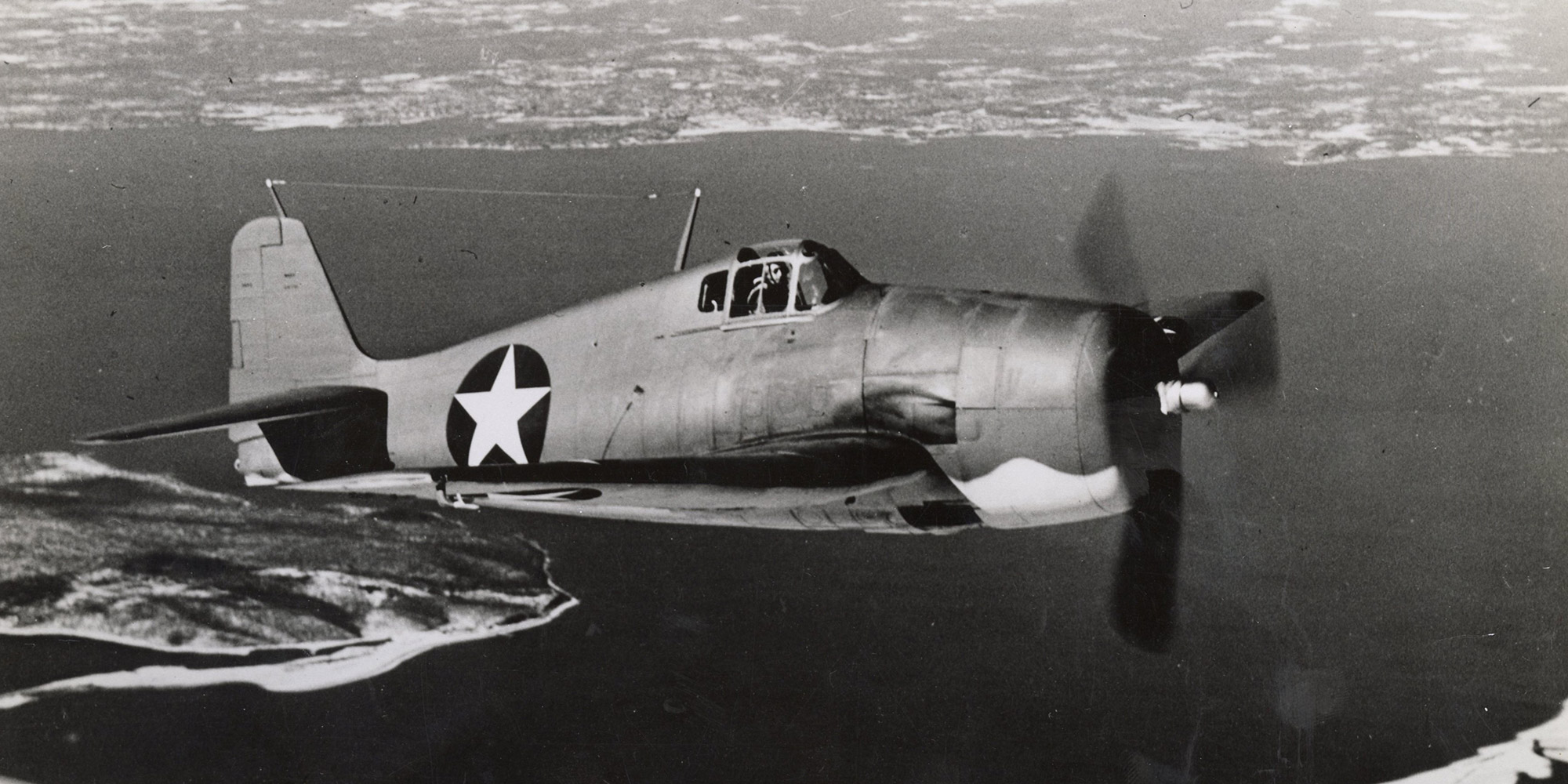
By Tony Chong – Northrop Grumman Aeronautics Historian
An introduction to the enduring legacy of Northrop Grumman’s contributions to naval aviation, dating back to the late 19th century.
Early Beginnings: 1898-1911 - The Dawn of Naval Aviation
The United States Navy’s interest in aviation began in 1898 when then-Assistant Secretary of the Navy Theodore Roosevelt urged official Naval participation in a special interservice board looking into military applications of Samuel P. Langley’s flying machine.
Though Langley’s effort failed, the Wright brothers succeeded on Dec. 17, 1903, with the first powered and controlled manned flight in history. Subsequent public flying exhibitions by the Wrights and other pioneering aviators such as Glenn Curtiss saw attending Navy observers becoming more enthusiastic about the potential uses of aviation to the fleet.
By 1910, this enthusiasm evolved into practical demonstrations. Civilian stunt pilot Eugene Ely flew off a temporary wooden deck on the bow of the light cruiser USS Birmingham (CL-2) on Nov. 14 of that year near Hampton Roads, Virginia, becoming the first aircraft launched from a ship. Ely followed that with a landing and take-off on armored cruiser USS Pennsylvania (CA-4) in San Francisco Bay on Jan. 18, 1911.
Convinced of the utility of aircraft for fleet use, the Navy authorized purchase of its first airplanes on May 8, 1911, marking the official birth of Naval Aviation. Northrop Grumman Aeronautics Systems legacy companies began their relationship with Naval Aviation soon after its official start.
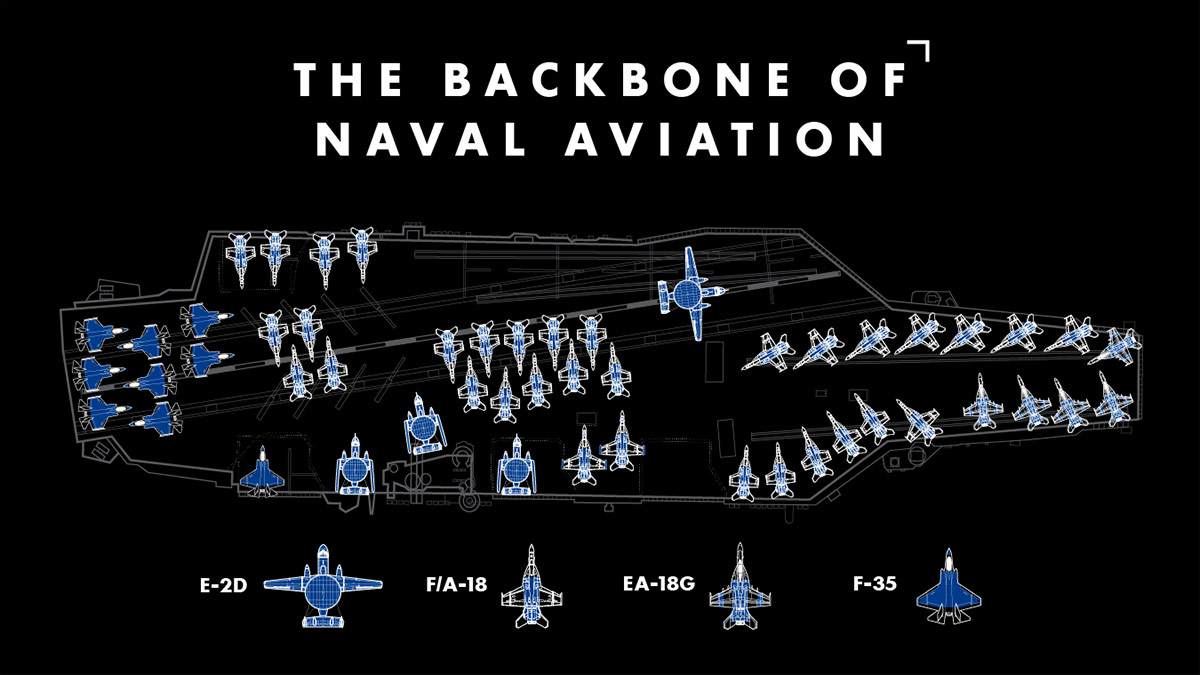
The Legacy Begins: 1911-1930 - Foundation of Legacy Companies

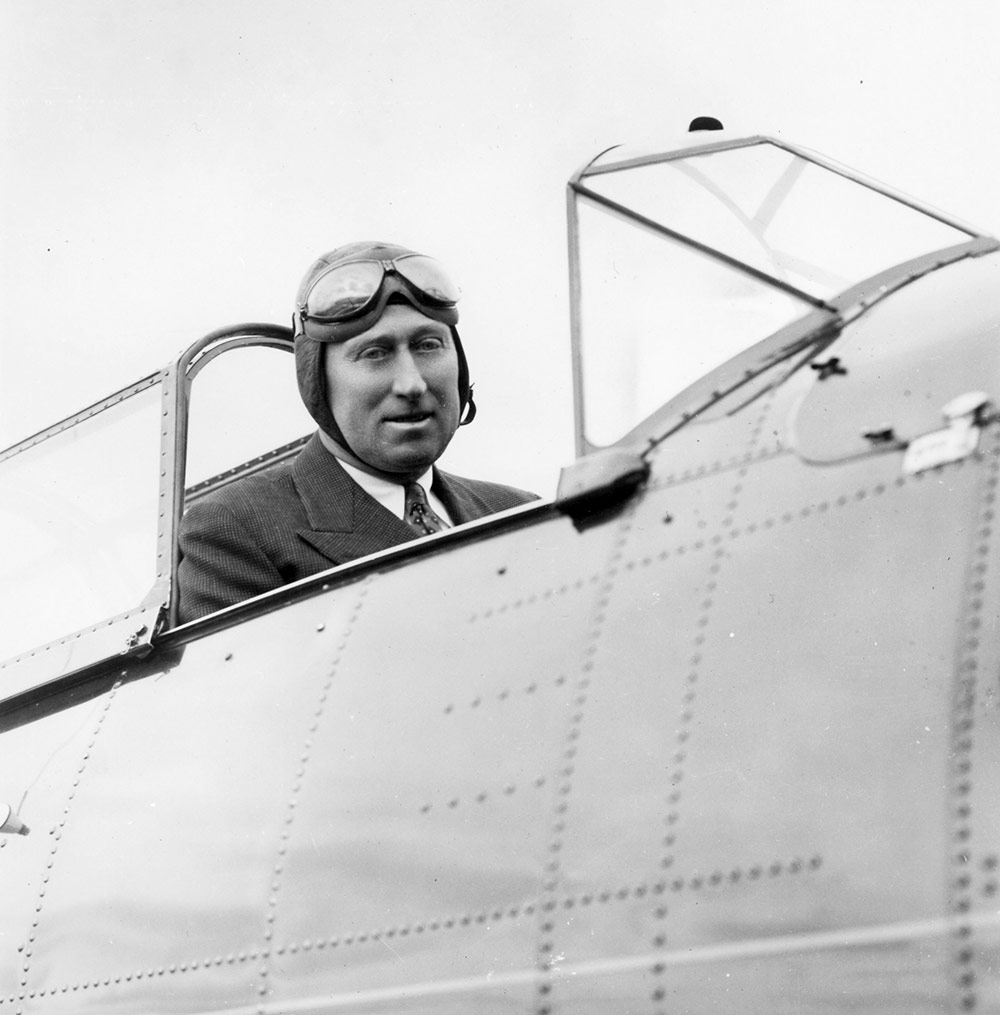
Chauncey (Chance) M. Vought had the earliest legacy company association with Naval Aviation. Prior to the founding of his company, the Lewis and Vought Corporation, in 1917, Vought worked as an engineer for a variety of other companies, including Curtiss, Wright, and Wright-Martin on several projects, including flying boats. The Lewis and Vought Corporation built its first aircraft for the Navy in 1921. The later Vought Corporation became part of Northrop Grumman in 1994.
Another founder, Leroy (Roy) R. Grumman (pictured), enlisted in the Naval Reserve in 1917 after graduation from Cornell University. He became fascinated with aviation and eventually became a Navy pilot and a training pilot. The Navy soon sent Grumman to MIT to take a naval aeronautical engineering course. After completing the course, Grumman was assigned to the League Island Naval Yard as a test and acceptance pilot and project manager on the Loening M-8 observation monoplane. Impressed with Grumman, the Loening brothers hired him away from the Navy in 1920 and made him a test pilot and engineer, then quickly factory manager and general manager of their New York factory, building afloat and amphibious aircraft for the Navy.
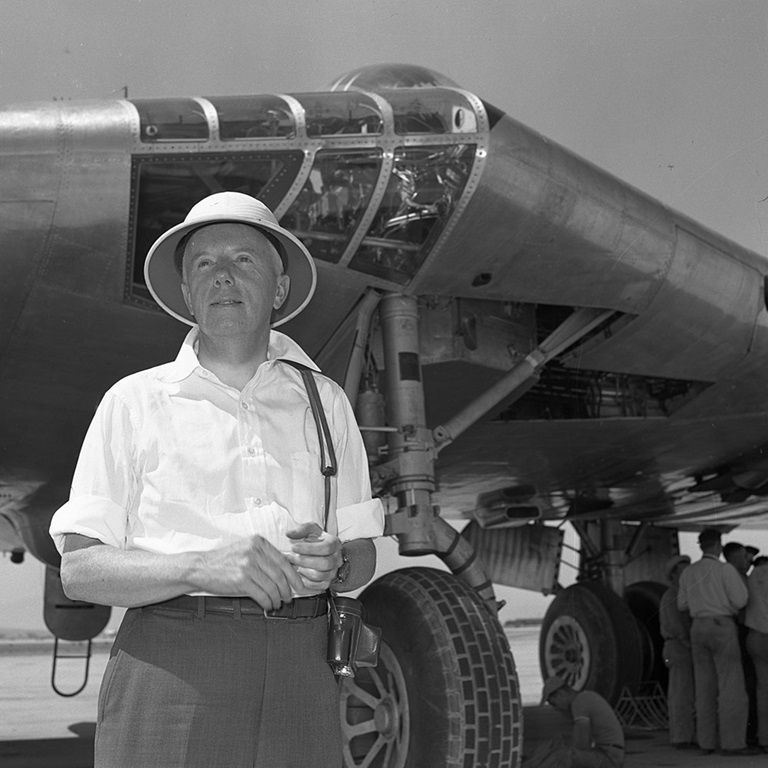
In 1916, founder John (Jack) K. Northrop (pictured) started working for the Loughead brothers in Santa Barbara, California, as their sole engineer. Northrop went into the U.S. Army Signal Corps after America’s entry into World War I, but was bailed back to Loughead in 1917 to help finish their F-1 flying boat. This led to an award by the Navy to license-build a Curtiss HS-2L flying boat.
World War I ended on Nov. 11, 1918, after tremendous advances in technology, especially aeronautics. Those advances were not lost on the U.S. Navy.
Naval Aviation Takes Off: 1919-1941 - From Experimentation to World War

On July 11, 1919, the fleet collier USS Jupiter was authorized to be converted into an experimental full-deck aircraft carrier for the purpose of testing out air operations, doctrine, and tactics for fleet integration. The first aircraft launched on Oct. 17, 1922, from the deck of the renamed USS Langley (CV 1), named in honor of Samual P. Langley, was a legacy Vought VE-7SF biplane fighter.
The first operational fleet carriers arrived in 1927. In December 1929, the Grumman Aircraft Engineering Company was formed. Roy Grumman knew what the Navy needed. In December 1931, Grumman’s initial internal design, the XFF-1, made its first flight. It was the first Navy carrier fighter to incorporate an enclosed canopy, retractable landing gear, and 200 mph speed in the same platform. The Grumman Corporation joined the renamed Chance Vought Corporation as long-term legacy aircraft providers to the Navy.
The Cat is Born: 1941-1945 - World War II Efforts

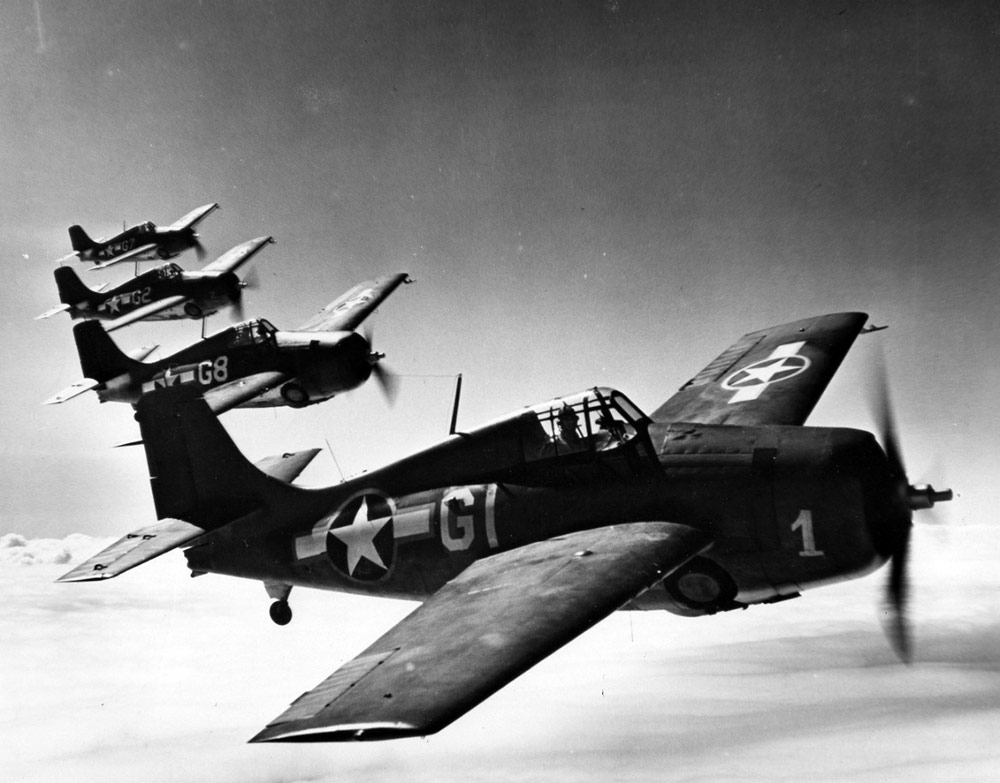
The advent of World War II tested the abilities of both Naval Aviation and its contractor base. Both rose to the occasion. The aircraft carrier became the predominant power in naval warfare, and the contractors provided exceptional support and quality. The Grumman F4F Wildcat (pictured) held the line against the Japanese Zero fighter until the superior Grumman F6F Hellcat and Vought F4U Corsair entered operational service.
The Hellcat set an amazing 19-1 kill ratio in the Pacific Theater and the production totals were equally staggering. There were 12,275 Hellcats built in Bethpage, New York, when production ended in November 1945, including 605 in March 1945 alone—still a record for a single factory.
Grumman F4F Wildcat and TBF Avenger totals were augmented by license-built units from General Motors Eastern Aircraft Division plants, of which those came to nearly 6,000 Wildcats and over 7,000 Avengers.
Post-War Advancements: 1945-1980 – Grumman Air Wing and the Jet Age

Post-war development saw the advent of jet engine technology and refined carrier design. Angled decks became the norm as early Grumman and Vought jets helped fill out the air wings with Grumman F9F Panthers/Cougars, F11F Tigers, and S2F Trackers, along with Vought F7U Cutlass and F8U Crusaders.
The 1960s and 70s introduced the first nuclear-powered aircraft carrier, USS Enterprise, and new Grumman aircraft such as the E-2 Hawkeye (pictured), A-6 Intruder, C-2 Greyhound, EA-6B Prowler, and the F-14 Tomcat. Vought continued its carrier tradition with the A-7 Corsair II.
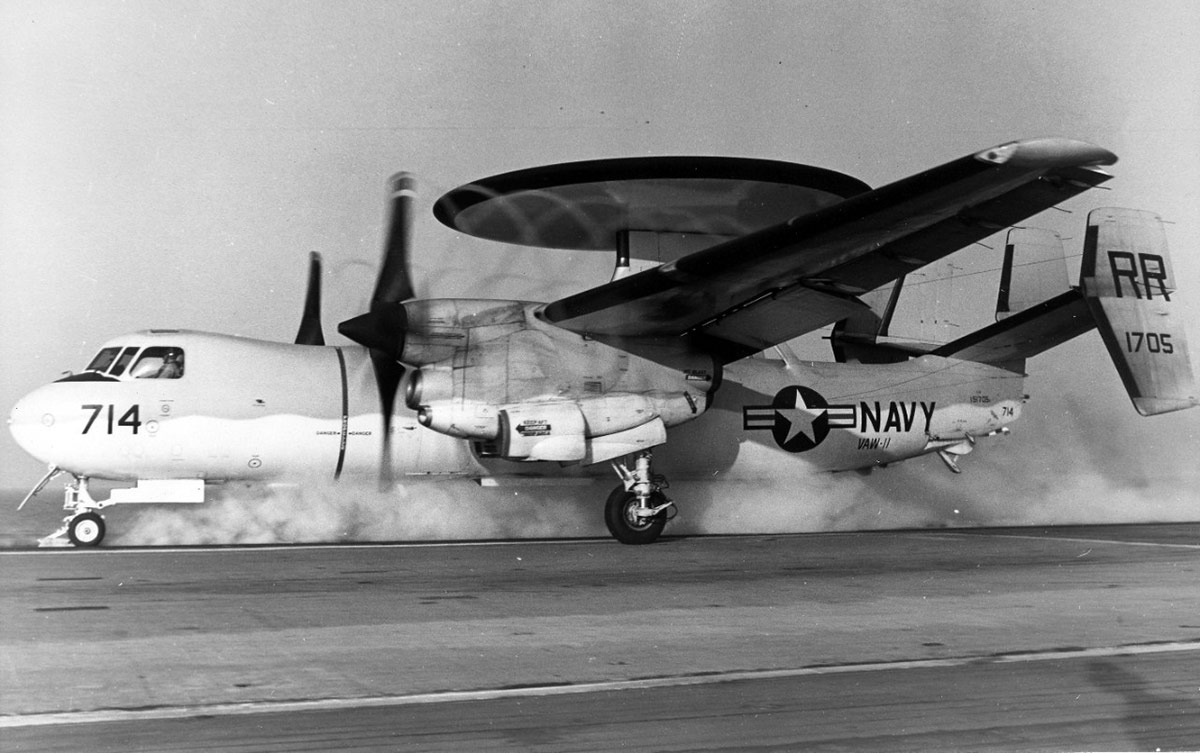
In 1987, USS Ranger embarked on a cruise with what became known as the “All-Grumman Air Wing.” All aircraft but the S-3 Viking antisubmarine warfare aircraft and SH-3 Sea King helicopter were Grumman-built, including the F-14 Tomcat, A-6 Intruder, KA-6 Intruder tanker, EA-6B Prowler, E-2 Hawkeye, and the C-2 Greyhound.
Turn of the Century: 1980-Present - Modern Era

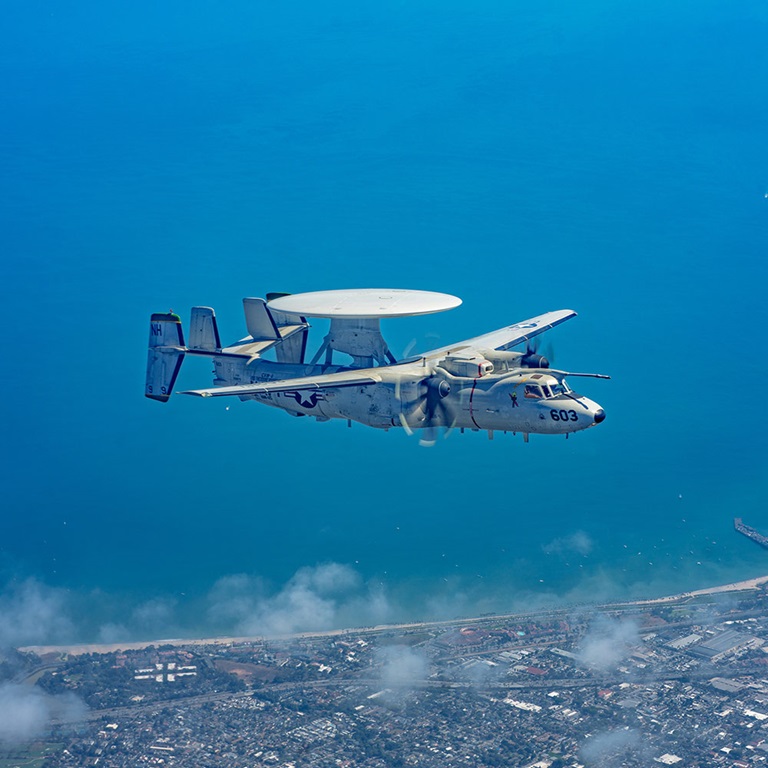
The 1990s into the 2010s saw an all-nuclear-powered Nimitz-class carrier fleet emerge and the start of a new class of carrier, the Gerald R. Ford-class. Legacy Northrop Grumman aircraft retired out of service and the E-2D Advanced Hawkeye (pictured) and C-2 Greyhounds remain the carrier-based prime aircraft built by Northrop Grumman.
Northrop Grumman continues strengthening the carrier air wing of today by providing critical components and mission systems for the F/A-18 Super Hornet, the EA-18G Growler, and the F-35C Lightning II.
A Continued Legacy

Since 1921, Northrop Grumman and its legacy companies have built over 41,000 carrier aircraft for the U.S. Navy. Additional thousands of land-based trainers, floatplanes, amphibians, and seaplane aircraft also contributed to Naval Aviation over the years. Not included in those totals are several thousand Ryan and Radioplane/Northrop Ventura Division targets, the Eastern Aircraft Division totals, and all the sub-contract work done on past and current carrier aircraft.
The relationship between Naval Aviation and the current and legacy companies of Northrop Grumman is long and impressive.
A tradition of unmatched partnership, collaboration and innovation is the benchmark of that proud association and will continue to be so in the future as Naval Aviation advances and future air dominance is realized.